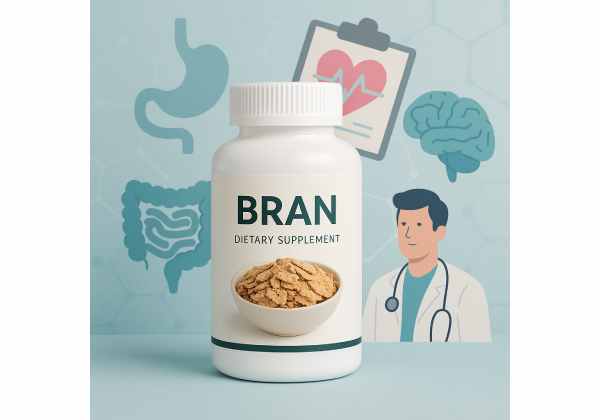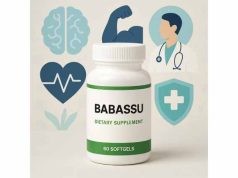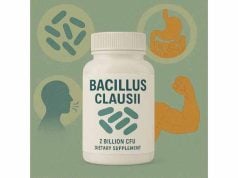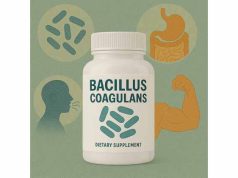
Bran—whether wheat, oat, rice, or another cereal variety—stands as one of the most potent, affordable, and versatile superfoods available today. Rich in dietary fiber, vitamins, minerals, and unique phytonutrients, bran supports everything from digestive regularity and heart health to sustained energy and healthy cholesterol levels. Whether you’re an athlete, busy parent, or simply someone looking to improve gut health, bran offers a simple, effective way to upgrade your nutrition naturally. As more people seek out functional foods to support wellness, bran is gaining recognition not just as a humble breakfast ingredient, but as a powerful daily supplement for modern health. This comprehensive guide covers bran’s science-backed benefits, how to use it, safe dosages, and what to watch out for to help you maximize its value.
Key Takeaways
- Bran is an exceptional source of soluble and insoluble fiber, helping to regulate digestion, support healthy cholesterol, and stabilize blood sugar.
- Regular consumption of bran may lower the risk of heart disease, type 2 diabetes, and some cancers thanks to its antioxidant-rich profile.
- Wheat, oat, and rice bran each offer unique nutrients—choosing the right type can help tailor benefits to your needs.
- Introducing bran gradually and drinking plenty of water helps minimize digestive discomfort and ensures optimal benefits.
- Bran may interact with certain medications and can be unsuitable for individuals with gluten sensitivity or specific digestive disorders.
Table of Contents
- Bran Overview: Nutritional Profile and Key Characteristics
- How Bran Supports Health: Scientific Mechanisms and Biological Actions
- Bran Benefits: Evidence-Based Uses for Digestion, Heart Health, and More
- Bran Safety: Tolerability, Digestive Effects, and Drug Interactions
- Optimal Bran Dosage: Usage, Preparation, and Timing Strategies
- Frequently Asked Questions About Bran
Bran Overview: Nutritional Profile and Key Characteristics
Bran is the nutrient-rich outer layer of cereal grains, separated during milling to produce refined flours. Often discarded in the production of white rice, white flour, and other polished grains, bran contains a remarkable concentration of fiber, B vitamins, minerals, antioxidants, and beneficial plant compounds that are largely missing from refined products.
Types of Bran
- Wheat Bran: Known for its robust, earthy flavor and high insoluble fiber content, wheat bran is especially valued for promoting regular bowel movements and overall colon health.
- Oat Bran: With a milder taste and higher soluble fiber—especially beta-glucans—oat bran is celebrated for its cholesterol-lowering and blood sugar–balancing effects.
- Rice Bran: Rich in antioxidants such as oryzanol, rice bran is popular in some cultures for its unique lipid profile and mild, nutty flavor.
- Other Types: Barley, corn, and rye brans each have distinct properties and are sometimes found in specialty health foods.
Nutritional Highlights
A single serving of bran (usually 1/4 cup or about 15–20 grams) packs a powerful nutrient punch:
- Fiber: Bran is primarily known for its high fiber content, providing both insoluble (adds bulk, supports regularity) and soluble (slows digestion, supports heart health) fibers.
- Vitamins: Especially rich in B vitamins like thiamin (B1), niacin (B3), riboflavin (B2), vitamin B6, and folate.
- Minerals: A source of magnesium, iron, zinc, selenium, phosphorus, and potassium.
- Antioxidants and Phytochemicals: Including phenolic acids, lignans, flavonoids, and unique compounds like phytic acid and ferulic acid.
- Healthy Fats: Particularly rice bran, which contains unsaturated fatty acids and compounds such as gamma-oryzanol.
What Sets Bran Apart?
Bran is more than just “roughage.” Unlike isolated fiber supplements, bran delivers a natural matrix of nutrients, antioxidants, and prebiotics (substances that nourish beneficial gut bacteria). This synergy makes bran uniquely beneficial for gut health, metabolic wellness, and even immune function.
Whole Grain vs. Refined: The Bran Factor
When grains are refined, the bran and germ layers are removed, stripping away most fiber and micronutrients. Consuming bran—whether sprinkled on cereal, baked into bread, or added to smoothies—restores many of the health benefits lost in processed foods.
Flavor and Culinary Uses
- Bran’s taste varies: wheat bran is hearty and robust, oat bran is mild and creamy, and rice bran is delicately nutty.
- It can be stirred into yogurt, baked goods, pancakes, or simply sprinkled over salads or oatmeal for a nutritional boost.
Bran in Traditional and Modern Diets
While bran has been a staple in some cultures for generations, it’s now gaining popularity globally for its role in preventative health and disease management.
Who Should Consider Bran?
- People seeking to improve digestive health or relieve constipation naturally
- Those at risk for heart disease, diabetes, or high cholesterol
- Athletes needing sustained energy and micronutrient support
- Anyone aiming to add more fiber and antioxidants to their diet
Who Should Exercise Caution?
- Individuals with gluten intolerance or celiac disease (wheat bran contains gluten)
- Those with certain digestive conditions (IBD, IBS) may need to limit insoluble fiber
- People taking specific medications (see Safety section)
Bran is a simple, versatile addition to most diets and an excellent way to reclaim the nutritional advantages of whole grains.
How Bran Supports Health: Scientific Mechanisms and Biological Actions
Bran’s benefits for digestive, metabolic, and cardiovascular health are grounded in its diverse range of biologically active compounds. Here’s a closer look at the science behind how bran acts within the body and why its effects go far beyond basic fiber.
The Power of Dietary Fiber
- Insoluble Fiber: This type of fiber is not digested by the body, so it adds bulk to stool and speeds up movement through the digestive tract. The result? More regular bowel movements, prevention of constipation, and reduced risk of diverticulosis.
- Soluble Fiber: Dissolves in water to form a gel-like substance, which slows digestion, increases feelings of fullness, and helps lower cholesterol and regulate blood sugar.
Bran’s Effect on Gut Health
- Feeds Beneficial Bacteria: Bran’s fiber and prebiotic compounds act as food for gut microbiota, encouraging a balanced ecosystem of beneficial bacteria. This translates to better digestion, reduced inflammation, and stronger immunity.
- Enhances Short-Chain Fatty Acid Production: Fermentation of bran fiber by gut bacteria produces short-chain fatty acids (SCFAs) like butyrate, which fuel colon cells, reduce inflammation, and may lower colorectal cancer risk.
Cholesterol and Heart Health
- Beta-Glucans (especially in oat bran): These unique soluble fibers bind to cholesterol in the digestive tract, reducing its absorption and promoting excretion. Regular intake of oat bran is associated with lower LDL (“bad”) cholesterol levels and a reduced risk of heart disease.
- Lignan and Antioxidant Content: Bran’s polyphenols and lignans act as antioxidants, scavenging harmful free radicals and reducing oxidative stress on the cardiovascular system.
Blood Sugar Regulation
- Slows Carbohydrate Absorption: By slowing digestion, bran helps prevent rapid spikes in blood glucose and insulin. This benefit is especially pronounced with oat bran and wheat bran, supporting better glycemic control in people with or at risk for type 2 diabetes.
Satiety, Weight Control, and Energy
- Promotes Fullness: The bulk and gel-forming properties of bran’s fiber contribute to prolonged feelings of satiety, potentially aiding in weight management and reducing overall calorie intake.
- Steady Energy Release: By slowing the absorption of carbohydrates, bran helps maintain more consistent blood sugar and energy levels throughout the day.
Antioxidant and Anti-Inflammatory Effects
- Rich in Phytochemicals: Phenolic acids, flavonoids, and other compounds in bran have been shown to reduce markers of inflammation and oxidative damage, which are linked to chronic diseases.
Unique Compounds in Different Types of Bran
- Oat Bran: High in beta-glucans, shown to lower cholesterol and improve immune function.
- Rice Bran: Contains gamma-oryzanol, a compound with potential cholesterol-lowering and antioxidant effects.
- Wheat Bran: Abundant in insoluble fiber and magnesium, crucial for regularity and metabolic health.
Cumulative and Synergistic Benefits
Bran’s effects are not just due to fiber alone, but a synergy of nutrients and phytochemicals working together. This is why whole bran is more effective than isolated fiber supplements for overall health outcomes.
How Fast Does Bran Work?
- Improvements in digestion and regularity may be noticed within days.
- Cholesterol and blood sugar benefits usually require consistent intake over weeks or months.
Understanding bran’s multi-layered impact on health helps explain why adding even a small amount to your diet can yield significant, lasting wellness dividends.
Bran Benefits: Evidence-Based Uses for Digestion, Heart Health, and More
Bran’s reputation as a nutritional powerhouse is well deserved. Let’s dive deeper into its most compelling, research-backed benefits and how it can be harnessed to support everyday health goals.
1. Digestive Health and Regularity
Bran’s most immediate and noticeable effect is its ability to promote regular, comfortable bowel movements. Insoluble fiber increases stool bulk and speeds up transit, helping prevent constipation and supporting a healthy colon environment. Individuals with mild, chronic constipation often report improved comfort and less reliance on laxatives after adding bran to their routine.
2. Cholesterol Reduction and Heart Health
Oat bran in particular is backed by substantial evidence showing it can reduce LDL cholesterol when consumed regularly, thanks to its beta-glucan content. Wheat and rice bran also contribute to heart health by providing fiber, antioxidants, and micronutrients that support healthy blood vessels and lower inflammation.
3. Blood Sugar Control
Adding bran to meals can help blunt rapid increases in blood sugar after eating, thanks to its ability to slow carbohydrate digestion and absorption. This is especially valuable for people with prediabetes, metabolic syndrome, or type 2 diabetes.
4. Weight Management
High-fiber foods like bran promote feelings of fullness, which can lead to reduced calorie intake over time. Some studies suggest that bran supplements may help reduce appetite, aid weight loss, and support long-term weight maintenance as part of a balanced diet.
5. Cancer Risk Reduction
There is growing evidence that regular consumption of fiber-rich foods, including bran, is linked to a lower risk of colorectal cancer. This may be due to improved gut health, reduced inflammation, and increased production of protective short-chain fatty acids.
6. Immune Support and Reduced Inflammation
The prebiotic and antioxidant properties of bran help strengthen the immune system and reduce markers of chronic inflammation. This can contribute to overall resilience, lower risk of infection, and support for those with inflammatory conditions.
7. Micronutrient and Antioxidant Boost
Bran supplies an array of essential vitamins and minerals often lacking in modern diets, including B vitamins for energy, magnesium for muscle and nerve function, and iron for healthy blood.
Practical Ways to Add Bran to Your Diet
- Stir into oatmeal, yogurt, or smoothies for a fiber-rich breakfast
- Add to pancake or muffin batter to boost nutrition
- Sprinkle over salads or roasted vegetables for crunch and nutrients
- Use as a topping for casseroles or in homemade granola
Who Will Benefit Most from Bran?
- Adults struggling with constipation or irregularity
- People with high cholesterol or a family history of heart disease
- Individuals looking for a simple way to improve overall dietary quality
- Older adults, athletes, and anyone needing an energy, nutrient, and fiber boost
How Soon Can Benefits Be Noticed?
- Digestive changes are often noticed within days
- Cholesterol, weight, and blood sugar changes may take several weeks of consistent use
Remember, while bran offers significant benefits, introducing it gradually and as part of a well-rounded diet will ensure the best and most comfortable results.
Bran Safety: Tolerability, Digestive Effects, and Drug Interactions
Bran is widely regarded as a safe, natural addition to most diets, but like any powerful food supplement, it’s essential to understand potential side effects, sensitivities, and medication interactions before making it a daily habit. By knowing what to expect and how to introduce bran responsibly, you can maximize benefits while minimizing any risks.
Digestive Tolerability and Common Side Effects
- Gas and Bloating: The most common side effects are mild gastrointestinal symptoms, especially in people unaccustomed to high fiber diets. These include increased flatulence, abdominal bloating, or mild cramping, typically easing as the body adjusts.
- Loose Stools or Diarrhea: Adding too much bran too quickly, or failing to drink enough water, can lead to loose stools or even diarrhea. This is more likely with oat or wheat bran, which are especially rich in soluble and insoluble fiber.
- Constipation: Ironically, if bran is consumed without adequate hydration, it can actually contribute to constipation by absorbing water in the gut and creating overly firm stools.
- Mineral Absorption: Bran contains phytic acid, a natural compound that can bind minerals like iron, zinc, calcium, and magnesium, potentially reducing their absorption if bran is consumed in very large quantities over a long period. For most people, this isn’t a problem when bran is eaten as part of a varied diet.
Allergies and Food Sensitivities
- Gluten: Wheat bran and some barley brans contain gluten and are not suitable for individuals with celiac disease or gluten intolerance. Oat bran is naturally gluten-free but can be cross-contaminated during processing.
- Other Allergens: Though rare, allergic reactions to bran (such as rice bran) can occur. Symptoms include hives, itching, swelling, or, in severe cases, anaphylaxis. If any of these appear, discontinue use and seek medical help.
Who Should Use Caution or Avoid Bran?
- People with Inflammatory Bowel Disease (IBD): Conditions like Crohn’s disease or ulcerative colitis may be aggravated by the roughage in bran, especially during flare-ups.
- Irritable Bowel Syndrome (IBS): While some find fiber helpful, others with IBS may experience increased bloating or discomfort from bran.
- Individuals Prone to Intestinal Blockages: Those with strictures or narrowing of the bowel must avoid high-fiber supplements unless cleared by a physician.
- Infants and Toddlers: High-fiber bran supplements are not recommended for young children, whose digestive tracts are more sensitive.
Medication Interactions and Timing
Bran’s high fiber content can affect the absorption and efficacy of certain medications, particularly when taken at the same time. Common interactions include:
- Thyroid Medications: Fiber can bind with levothyroxine and reduce its absorption. Take medications at least 1–2 hours before or after bran-containing meals.
- Diabetes Medications: Bran may enhance the blood sugar-lowering effect of some antidiabetic drugs, potentially leading to hypoglycemia. Monitor blood sugar closely if adjusting your fiber intake.
- Mineral Supplements: Calcium, iron, magnesium, and zinc supplements may be less well absorbed when taken with large quantities of bran. Separate their intake by a couple of hours.
- Other Medications: Always consult your healthcare provider about potential interactions if you are on regular medication for heart, digestive, or immune conditions.
How to Minimize Risks and Side Effects
- Introduce Bran Gradually: Start with a small amount (1–2 tablespoons daily), increasing by a tablespoon every few days as tolerated.
- Hydrate Well: Aim for at least 8–10 cups of water daily to help fiber move smoothly through your digestive tract.
- Monitor Your Body: Track digestive changes, stool consistency, and any discomfort. Adjust intake accordingly.
- Balance Your Diet: Include a wide range of whole foods to ensure you’re getting enough micronutrients, and don’t rely solely on bran for your fiber needs.
Signs Bran May Not Be Right for You
Persistent digestive distress, unexplained fatigue, unexplained anemia, or new food sensitivities may mean bran isn’t compatible with your current health status. In these cases, consult a doctor or registered dietitian for personalized guidance.
General Safety Summary
For most healthy adults, bran is a well-tolerated, side-effect–sparing way to improve nutrition and health. Caution is warranted for those with existing digestive issues or taking specific medications, but most side effects are preventable with gradual introduction and proper hydration.
Optimal Bran Dosage: Usage, Preparation, and Timing Strategies
Using bran effectively for maximum health benefit is all about dose, timing, and the right preparation. Whether you’re aiming for improved digestion, better cholesterol, or simply a fiber boost, here’s how to make bran a practical and enjoyable part of your daily routine.
Recommended Daily Intake
- For Adults: The general target for dietary fiber is 25–38 grams per day for adults (depending on age and sex). Most people can achieve this by adding 1–4 tablespoons (7–28 grams) of bran per day, depending on dietary needs and tolerance.
- For Children: Smaller amounts (1–2 teaspoons for young children, up to 1 tablespoon for older children) can be added to foods, but always introduce slowly and under supervision.
- For Specific Goals: If using bran to relieve constipation or lower cholesterol, clinical studies often use 10–30 grams per day, split into two or three servings.
Best Practices for Usage
- Start Low, Go Slow: Rapid increases can cause digestive upset. Start with 1 tablespoon daily, adding more only if well tolerated.
- Always Take with Fluids: Stir bran into a glass of water, milk, or a smoothie, or sprinkle onto moist foods like yogurt, porridge, or soup.
- Meal Timing: Bran can be added to any meal, but breakfast is most common. Some people prefer splitting the dose between breakfast and lunch.
- Cooking and Baking: Bran is heat-stable and can be added to muffins, pancakes, breads, or casseroles without losing its health benefits.
- Avoid Dry Consumption: Never eat bran “dry” by the spoonful, as it can expand and cause choking or obstruction.
Customizing Your Bran Routine
- For Regularity: Add bran to breakfast cereal or porridge for gentle, sustained digestive support.
- For Cholesterol: Oat bran is particularly effective—add it daily to your diet for at least 3–6 weeks to notice measurable reductions.
- For Weight Management: Use bran as a filler in baked goods, soups, or shakes to increase satiety and support reduced calorie intake.
Special Considerations for Optimal Absorption
- Space Out Medications and Supplements: Take bran at least 1–2 hours apart from essential medications and mineral supplements to avoid reduced absorption.
- Balance with Other Fiber Sources: Combine bran with fruits, vegetables, legumes, and whole grains for a complete fiber profile.
- Monitor for Signs of Overuse: If you experience persistent bloating, abdominal discomfort, or loose stools, reduce your dose and slowly build back up as tolerated.
Storage and Shelf Life
- Keep bran in an airtight container in a cool, dry place.
- Refrigerate oat and rice bran for longer freshness, as they contain oils that can go rancid.
- Use within 3–6 months for best flavor and nutrition.
Tips for Children, Older Adults, and Sensitive Groups
- Children and seniors should start with smaller amounts and increase slowly.
- If you have swallowing difficulties, always mix bran thoroughly into moist foods.
- For those with a history of bowel surgery or strictures, seek medical guidance before adding bran.
Tracking Your Progress
- Use a food and symptom diary to monitor changes in bowel movements, cholesterol, blood sugar, and overall well-being after introducing bran.
Summary
With the right strategy, bran is easy to incorporate, safe for most people, and capable of delivering substantial, lasting benefits for gut, heart, and metabolic health.
Frequently Asked Questions About Bran
What are the main benefits of bran in the diet?
Bran delivers both soluble and insoluble fiber, supporting digestion, heart health, blood sugar control, and a feeling of fullness. It also provides B vitamins, minerals, and antioxidants, making it a potent nutrition booster.
How much bran should I eat each day?
For most adults, 1–4 tablespoons (about 7–28 grams) daily is a safe, effective range. Always start low and increase gradually, with plenty of fluids. Adjust based on tolerance and your personal fiber goals.
Is bran safe for everyone to consume?
Bran is safe for most people but should be avoided or used with caution by those with celiac disease, gluten sensitivity, or certain digestive conditions. Consult a healthcare provider if you have chronic digestive issues or take regular medication.
Can bran help with weight loss?
Yes, bran promotes satiety and can help reduce overall calorie intake, making it useful in weight management plans. Its fiber content slows digestion and helps you feel fuller longer, reducing the urge to snack.
Does bran lower cholesterol levels?
Oat bran in particular is proven to lower LDL cholesterol when consumed regularly, thanks to its beta-glucan fiber. Wheat and rice bran may also help, especially when part of a high-fiber, heart-healthy diet.
What’s the best way to add bran to my diet?
Mix bran into oatmeal, yogurt, smoothies, or baked goods. Always combine with plenty of fluids to prevent digestive discomfort. Gradually increase your intake over days to weeks for best results.
Are there any side effects from eating bran?
Side effects are mostly digestive, like gas, bloating, or loose stools, especially if introduced too quickly or without enough water. Rarely, bran can reduce absorption of minerals or interact with medications.
Disclaimer:
The information in this article is provided for educational purposes only and should not be used as a substitute for professional medical advice, diagnosis, or treatment. Always consult your healthcare provider before making changes to your diet, especially if you have health conditions or take medication. Individual results and needs may vary.
If you found this bran guide helpful, please share it with friends, family, or on your favorite social platforms like Facebook or X (formerly Twitter). Your support helps us continue delivering high-quality, evidence-based content. Don’t forget to follow us on social media for more science-backed nutrition tips and healthy living advice!










